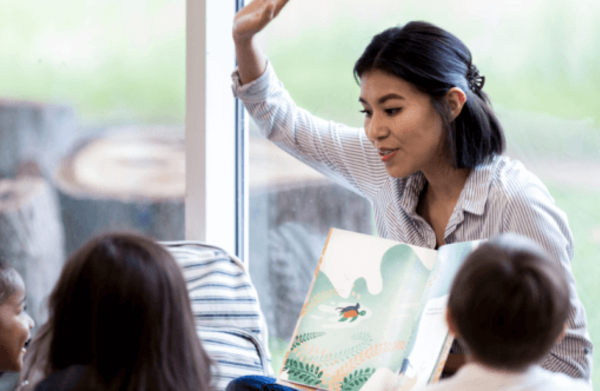Posted on
Making visible the hidden complexity of teaching
Years ago, as a relatively new mentor teacher, I planned and implemented a Think-Pair-Share activity as part of a second-grade science lesson. Because two teacher-candidates were observing me, I was extra intentional about how I implemented this strategy. I carefully paired students; I chose an open-ended question to push thinking; and I gave students time to think and try out their ideas in a low-stakes way before participating in a whole-class discussion. The activity went well, and I felt pretty good about my demonstration of effective teaching.
Afterwards, I asked the two teacher-candidates what they observed, and they told me it was a “nice lesson.” My heart sank. Did they not see the deliberate planning? Why couldn’t they articulate that students had listened to and learned from each other? In that moment, I had a stunning realization: The candidates could not see any of this because I never told them about any of this. They could not see the thinking behind each step of my planning, and they had no idea about my rationale for instructional decisions.
I took a deep breath and walked the candidates through each step of the activity they had just witnessed — this time including my thought process for every decision and instructional move. The candidates were surprised by the level of thinking and preparation I had done before ever stepping in front of students. They inquired about student pairings and types of questions. They wanted to know how tomorrow’s lesson would build on the conversations students had today.
This experience marked a shift in how I mentored. I began using planning and debrief sessions to connect the practices I was modeling – the how – with the rationale for my choices – the why. When I explicitly shared my thinking and decision-making, candidates developed a deeper understanding of the mental models they were constructing for effective instruction, and they learned to connect their own how and why to student learning.
I was reminded of this a few months ago when a teacher candidate shared an experience she had observing a fourth grade teacher. When this teacher moved closer to a particular student, he shared that he was doing this to be available to help the student stay engaged with a challenging task through his physical presence – a technique he labeled “proximity.” Naming and sharing the technique helped candidates see his actions and understand his thinking. The candidate who shared the story said she wished every teacher she observed would do the same thing. Seeing effective practice isn’t sufficient. Without explicit explanations of how or why, candidates may not be able to replicate effective instruction on their own.
So how can teacher-educators think about sharing the how and the why behind their own instruction?
At the teacher-preparation program I worked at in Chicago, we coached mentors to narrate their teaching to make their thought processes transparent – just like that fourth grade teacher had done. By being transparent, mentor teachers got immediate feedback about their own practice based on whether candidates were able to implement instructional moves. Mentor teachers had to analyze whether the candidate missed the mark, or whether they, the mentors, had failed to make transparent the most salient aspects of the move. As mentors explained the how and why of instructional moves to candidates, they became more consciously aware of what was important. They were more intentional about what and how they modeled for candidates. As a result, they often reported that their own teaching practice improved.
Combining modeling with practice and feedback, two other foundational elements of effective teacher preparation, can create even more powerful experiences for candidates.
I saw this firsthand this spring when I observed teacher-candidates participate in a clinical-experiences pilot designed around a cycle of modeling, practice, and feedback. The cycle started with the mentor teacher reviewing an instructional strategy and walking the candidate through her lesson plan (modeling) to support the candidate’s understanding of the how and why of the lesson. As the mentor taught the lesson (modeling) to a group of students, the candidate shadowed her moves, sitting next to her, standing next to her, and moving with her through the classroom. The candidate saw, heard and felt the teacher’s perspective first hand. Next, the candidate taught that same lesson to a new group of students, reenacting what she had just witnessed (practice). At the conclusion of the lesson, the mentor teacher gave feedback, noting what worked and identifying two things for the candidate to work on (feedback). The candidate then taught the lesson one more time (practice) to a new group of students, incorporating the feedback from the mentor teacher.
Afterwards, the candidate told me that she had grown more in two days of the pilot than in all of her other clinical experiences combined. The sequence of modeling-practice-feedback-practice was a powerful experience for this candidate.
Even though teaching often looks simple, it is incredibly complex, and candidates need help to understand the how and why that leads to student learning. When teacher-educators make their underlying thinking transparent to teacher-candidates while modeling effective practice, candidates will develop more quickly and with a deeper understanding of what they are learning.
Related Stories:

Blog
Future teachers at Temple University practice using learning science in the field
In a bright classroom in Philadelphia, a group of kindergartners clustered around a table as a teach
March 09, 2022

Blog
Empowering clinical supervisors as instructional coaches
We supported clinical supervisors to strengthen coaching and feedback for candidates.
August 15, 2023

Blog
Sowing sustainable instructional improvement in teacher preparation
Lessons in redesigning teacher-preparation programs to be grounded in learning science.
September 17, 2024




